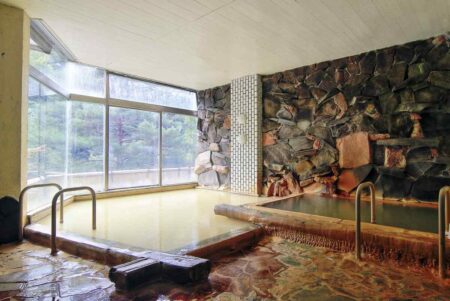
Photo by Akira Uchida / Special to Ryoko Yomiuri Publication
The left bathtub is for water directly from the hot spring sources, and the right one is for hot spring water that is further warmed.

12:41 JST, October 29, 2025
There are hot spring resorts called “rajiumu” (radium) onsen in Japan. It is believed that people who bathe in them can raise their immune strength and the natural healing ability of the body by inhaling gases containing tiny amounts of radioactive elements, such as radon, from the hot water. I have visited many famous radium onsen hot spring resorts nationwide, but for some reason, I had not gone to Masutomi Onsen in the city of Hokuto, Yamanashi Prefecture.
This hot spring resort is dubbed a hidden bath of Takeda Shingen, a warlord from the Sengoku period (from the late 15th century to the late 16th century), where he let injured soldiers heal their wounds by bathing there. Being fatigued due to the extremely hot weather this summer, it seemed like it would be the best hot spring choice of my life. So, I decided to go to Masutomi Onsen in search of the hidden hot spring resort.
Masutomi Onsen is in a mountainous area at an altitude of about 1,000 meters near the border with Nagano Prefecture. It takes about an hour by bus to reach the resort from Nirasaki Station on the JR Chuo Line.
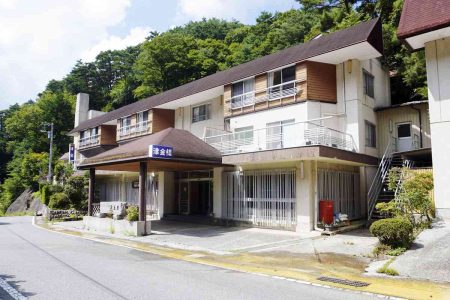
Photo by Akira Uchida / Special to Ryoko Yomiuri Publication
The inn comprises the main building and an older facility.
Five ryokan inns with bathing facilities lie along the Hontani River, and Tsugane Rou, where I lodged, was the furthest along the road.
The inn opened in 1875 in the Tsugane area of the Sutamacho district of the city. In 1914, the inn was relocated to the Masutomi Onsen resort area.
Taneji Tsugane, the fifth-generation owner of the inn, said: “As this has been an inn for curing illnesses since long ago, what our guests want to do is to bathe in the hot springs. This inn’s baths are rich in radon, and there are two sources of hot water that naturally gush out near the ground surface. We pay careful attention so that our guests can bathe in fresh and high-quality hot water from the springs.”
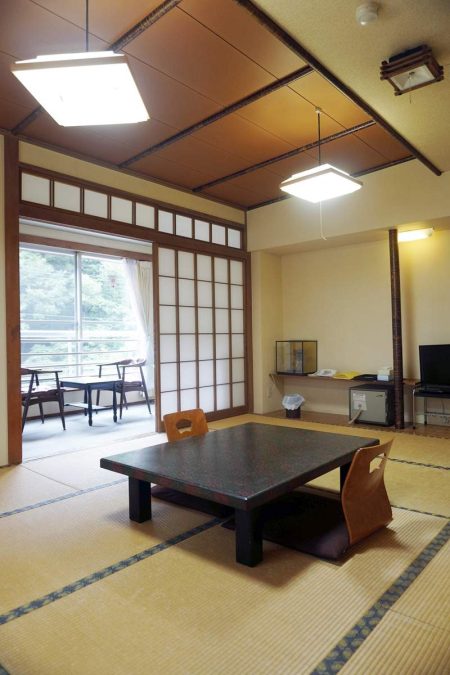
Photo by Akira Uchida / Special to Ryoko Yomiuri Publication
All the guest rooms are Japanese style.
The areas that get close attention are the locations of the bathing areas. There are two bathing areas at the inn. One is a big bath area where men and women bathe separately, and the other, called Nyu-no-yu, is a private bath. Both are located near the sources of the hot spring water to prevent gases containing radioactive elements from leaking after mixing with the outside air. The Nyu-no-yu bath is perfectly positioned, as the bathtub is located directly above one of the sources of hot spring water.
The temperature of the hot water fresh from the sources is around 26 C. In the big bath area for groups, there are bathtubs into which the original spring water flows and those in which the hot water is further warmed, so that guests can enjoy bathing in both the low- and high-temperature hot water. In order to maintain the quality of the hot spring water, it is warmed by indirect heat. Steam pipes are set up inside the bathtubs, and the hot spring water is warmed further by heat from the steam coursing through the pipes. The color of the water directly from the sources is golden, and that of the warmed water has a light black hue. The difference in the colors is a result of being warmed, and it is proof that both types of the hot spring waters are from the sources.
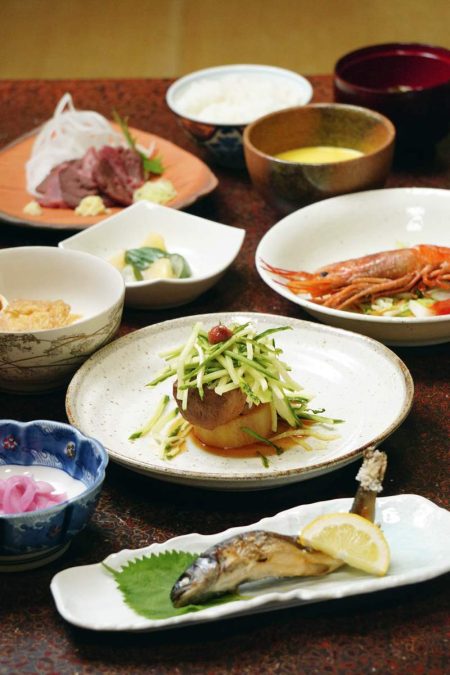
Photo by Akira Uchida / Special to Ryoko Yomiuri Publication
One example of a dinner set
After checking in, I went directly to the Nyu-no-yu bath. The water in the bathtub comes directly from the source, and it was a little cool when I first sat in the bath. However, my body gradually warmed up from deep inside.Watching the spout from which the hot spring water flowed into the bath, I spent time doing nothing in particular. When I finally woke from daydreaming, nearly 30 minutes had passed.
Soon after returning to my guest room, the dinner set was brought in. Tsugane said modestly, “Because we change the menu every day, there are no specialty items among the dishes.”However, the home-cooked dishes rich in vegetables were just the right amount and presented beautifully, so the meal was satisfactory to me.
Later, I bathed in the big bath area again. Afterward, lying on the futon, I immediately fell into a deep sleep. The following morning, I woke up feeling refreshed and felt that my body had become lighter. The stay made me feel that I will be able to work hard for the remaining part of the year.
***
Japan Tourism is presented in collaboration with Ryoko Yomiuri Publication, which publishes Ryoko Yomiuri, a monthly travel magazine. If you are interested in stories click here. .

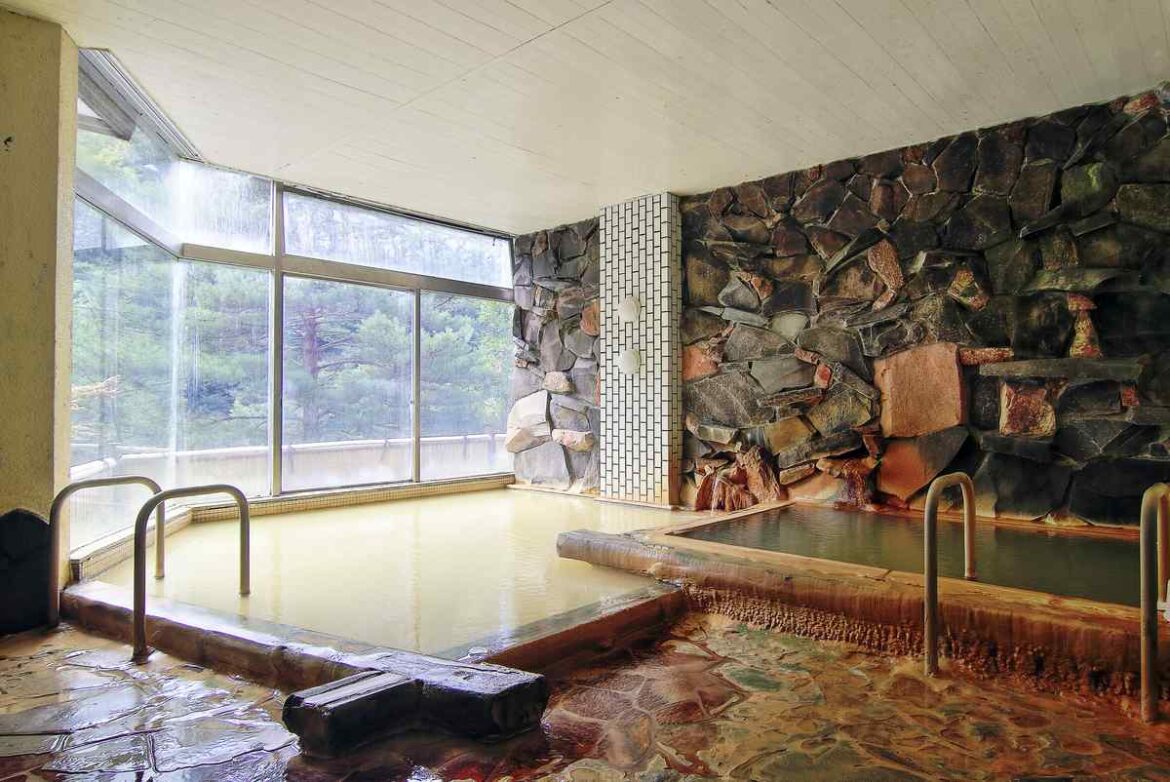
AloJapan.com